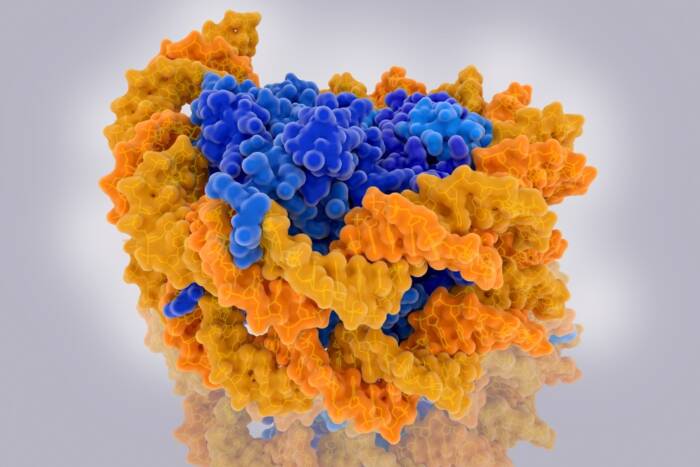Pearl Meister Greengard Prize honors pioneers of embryonic stem cell research
by TALLEY HENNING BROWN
 Three pioneers of embryonic stem cell research — an embryologist, a molecular geneticist and a developmental biologist — are the recipients of the 2007 Pearl Meister Greengard Prize, the university’s award for notable women in science. The award, presented in a ceremony in Caspary Auditorium on March 25, recognized Gail Martin of the University of California, San Francisco, Beatrice Mintz of Fox Chase Cancer Center and Elizabeth Robertson, from the University of Oxford.
Three pioneers of embryonic stem cell research — an embryologist, a molecular geneticist and a developmental biologist — are the recipients of the 2007 Pearl Meister Greengard Prize, the university’s award for notable women in science. The award, presented in a ceremony in Caspary Auditorium on March 25, recognized Gail Martin of the University of California, San Francisco, Beatrice Mintz of Fox Chase Cancer Center and Elizabeth Robertson, from the University of Oxford.
The Pearl Meister Greengard Prize, now in its fourth year, was founded by Vincent Astor Professor Paul Greengard and his wife, sculptor Ursula von Rydingsvard, in memory of Dr. Greengard’s mother, who died giving birth to him. It was established with proceeds from Dr. Greengard’s 2000 Nobel Prize in Physiology or Medicine, along with funds from university donors, in the hope that the prize might help redress the widespread lack of recognition for the accomplishments of women scientists. Previous recipients include embryologist Nicole Le Douarin, immunologist Philippa Marrack and geneticist Mary Frances Lyon.
The work of this year’s recipients helped form the foundation of all embryonic stem cell research and the cornerstone of all research that utilizes genetically altered mice, research that has significantly increased our understanding of human disease.
Beatrice Mintz, who was unable to attend the prize ceremony, is Jack Schultz Endowed Chair and senior member of the Institute for Cancer Research at the Fox Chase Cancer Center. In the early 1960s, she broke the law of Mendelian inheritance by creating the first chimera — an animal with two or more distinct genotypes arising from different zygotes. She showed how several mouse embryos, when pushed together, fuse into a single blastocyst and become a mouse with many genetic parents. She later discovered that embryonic carcinoma cells from one mouse placed into another, healthy mouse are recruited to differentiate into healthy cells.
Gail Martin, professor of anatomy and director of the department of developmental biology at the University of California, San Francisco, took the next step in the process by discovering how to maintain totipotent cells so that they can be taken from a normal embryo and remain undifferentiated until combined with another embryo. In 1977, she and Dr. Mintz created the first mouse engineered with a mutation analogous to a human disease. In 1981, Dr. Martin coined the term “embryonic stem cell.”
Elizabeth Robertson, Wellcome Trust Principal Research Fellow and professor of developmental biology at the University of Oxford, took the next, critical step in making embryonic stem cells viable for research use by demonstrating how they could be used to create not just one mouse but whole genetic strains of mice.
The award ceremony, which was presided over by President Paul Nurse, also featured a panel discussion that included the awardees, Dr. Nurse and presenter Cori Bargmann, head of the Laboratory of Neural Circuits and Behavior.
Guest speaker Martha Sharp Joukowsky, professor emerita of old world archaeology and art at Brown University, is an archaeologist who has spent the last 15 years supervising the excavation and partial restoration of the great temple at Petra, in Jordan. “Archaeology and science are not glamorous, but they are adventurous and filled with the unexpected,” said Dr. Joukowsky, in her remarks following President Nurse’s introduction. “Such a life makes more demands on the female sex and it takes a certain type of woman to persist and succeed…. By celebrating the careers of these intelligent and dedicated women, we not only honor Drs. Martin, Mintz and Robertson, but we also hope to encourage other women to be drawn to scientific research or archaeology as a career so that the human record may continue to be pieced together in the years ahead.”
“The scientific conversation among these three women … has revolutionized biology,” said Dr. Bargmann, speaking at the ceremony. “When we talk now about using stem cell research to make cells that will rescue a human with a disease, we are building from the work of these three extraordinary women.”


